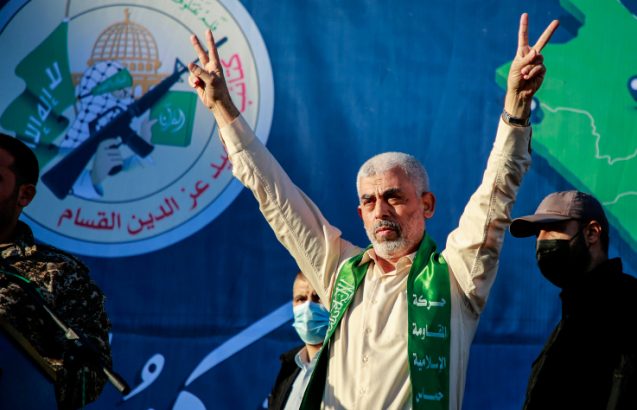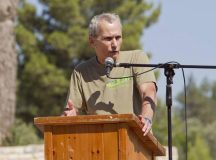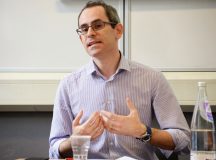Toby Greene argues that military tools are not enough. What’s needed is a long-term vision for sustainable political order that marginalises Hamas and its agenda
Listening to Netanyahu declare that as a result of Operation Guardian of the Walls, things are going to be different, it begins to feel like a kind of madness has set in. Madness in the sense of doing the same thing repeatedly and expecting a different result.
That military means are necessary and justified to contain Hamas is obvious. But bitter experience makes clear that military force will not bring strategic change.
Regardless of the tonnage of bombs dropped, and the number of ‘high value’ targets destroyed or killed, the degradation of Hamas’s capabilities, the deterrence effect, the interval until the next round, is temporary, and each time Hamas has returned with enhanced capabilities. In 2014 they fired a hundred rockets a day. Now they can fire five hundred.
If the goal is to defeat Hamas, then military tools must be accompanied by a long-term vision for sustainable political order that marginalises Hamas and their agenda.
This applies most immediately to the Gaza Strip. Jerusalem tensions and Hamas’s political ambitions may have triggered this round, but Gaza’s instability is heightened by underlying conditions that Israelis too often ignore, at our cost.
The humanitarian situation is dire. Over the seven years following Operation Protective Edge, whilst Hamas was building the Gaza Metro, progress on civilian infrastructure moved far too slowly. Gazans were up to 14 hours of electricity a day on average before the current violence, and supplies of unpolluted water fall well short of demand.
The demographics are even more striking. Gaza today has two million people. Around half are under the age of 15. (This helps explain why children are so highly represented among the more than 100 Gazan civilian fatalities in the recent conflict.) By 2030, the population is projected to be three million. Unemployment is at 45 per cent, and for those aged 15-29 it is 64 per cent. Movement and access for people and goods is extremely limited.
Where poverty, unemployment and hopelessness combine with such a massive youth bulge, the pressure cooker will always be on the edge of exploding.
Fixing infrastructure and providing access, whilst preventing Hamas from rearming, is a very difficult problem for Israel and donor countries. But new proposals are beginning to circulate, and to maximise deterrence, and the political cost to Hamas of a future escalation, Israel’s leaders should be driving an international process to address this challenge. If Israel were to apply a fraction of the energy and creativity to this strategic problem, as shown in its tactical efforts to defend against rockets and tunnels, we might see better results.
Stabilising the socio-economic situation whilst preventing rearmament may increase the timespan till the next explosion, but to disempower Hamas in the long run, Israel must go further.
In his magnum opus ‘World Order’, Henry Kissinger argues that any system of political order should be derived from the coincidence of power and legitimacy, and that, ‘to be sustainable, [it] must be accepted as just – not only by leaders, but also by citizens.’
To weaken Hamas’ revolutionary movement, Israel’s long-term goal must be political arrangements that are acceptable to at least a critical mass of Palestinians. These arrangements must satisfy reasonable Palestinian demands for dignity, opportunity and sovereignty, whilst maintaining Israel as a secure, Jewish, and democratic state.
Recent events make clear that the illegitimacy of the status quo means the perpetual high risk of unrest, not only in the Gaza Strip and West Bank, but in Israeli cities also. And the images of violence and destruction reverberating instantaneously around the world, coupled with the absence of any credible diplomatic horizon, are eroding the basis of Israel’s diplomatic support in many countries, including the United States.
The only candidate for a widely acceptable political order is one in which Palestinians enjoy meaningful independence in a state of their own, alongside Israel. Substantial diplomatic progress towards that goal is not possible in the current political circumstances. But this should not stop Israel articulating a serious vision for that outcome, and taking practical and visible steps consistent with it, without compromising its own security.
Doing so would create the basis for renewed international investment in the West Bank, expanding economic opportunities and generating hope for a better future, and reducing the space for Hamas to build its dominance across the Palestinian arena.
The two-state vision will never satisfy all Palestinians, and Hamas will always seek to disrupt it. Islamist extremism is not a product of the occupation. It is present across the Islamic world. But its opportunity to thrive is enhanced where political alternatives lack legitimacy and credibility.
Reviving hope in an acceptable political horizon is necessary for achieving the long term goal of reducing Hamas’ threat to manageable proportions. It would help in the meantime if Israel stopped presenting Hamas with political opportunities to gain at the expense of the PA, by unnecessarily stoking tensions in Jerusalem.
To weaken Hamas, Israel needs to strengthen the PA. This too is not simple. The PA is corrupt and divided, and its current leadership has passed over diplomatic opportunities in the past. But politics involves choosing between alternatives. Between Hamas and the PA it should be an obvious choice.
Yet Netanyahu has systematically undermined the PA. His government cut its tax transfers and encouraged the US to slash its aid, even whilst waving through hundreds of millions of dollars in Qatari cash to Hamas. Netanyahu used normalisation with Arab states and a pliant US president to side-line the Palestinians, rather than as new tools to strengthen Palestinian moderates, bring new investment to the West Bank, and create the basis for a new diplomatic process.
And the goals of stabilising the Gaza Strip, preventing Hamas rearmament, and recommitting to the goal of a two state solution, are linked in other ways. To develop adequate infrastructure in the Gaza Strip whilst preventing Hamas rearming, Israel needs greater support and engagement of the donor community than was seen after 2014, at a time when international resources are stretched thinner than ever. International donors may reasonably ask why they should invest their resources in reconstruction and monitoring in the Gaza Strip, absent an Israeli commitment to a long-term vision for political stability.
So an energetic focus on infrastructure development in the Gaza Strip, and a credible diplomatic horizon to undermine Hamas politically, are the twin weapons Israel needs to weaken Hamas, bolster international backing, and ultimately break this maddening cycle of destruction.
This requires a leadership that recognises the status quo is eroding Israeli national security and internal stability. It also requires marginalising, rather than empowering, the most extreme elements in Israeli society. (This article first appeared at Toby’s Times of Israel blog.)





































